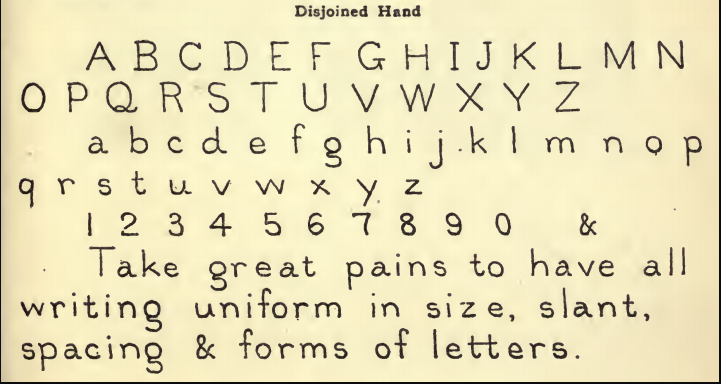via Big Think by Philip Perry

An Aztec human sacrifice. By: ignote, from a 16th century codex [Public domain], via Wikimedia Commons
Human sacrifice is today a part of urban legends or the serial murders of a few, craven madmen. But dig deeper into history and you’ll find that it was a part of many societies and took place in most regions around the world. These include the South Pacific, ancient Japan, early Southeast Asian societies, ancient Europe, certain Native American cultures, in Mesoamerica, and among the great civilizations of the ancient world. Babylon, Egypt, China, Greece, and even the precursor to the Romans, all took part in ritualized killings. In ancient Egypt and China, for instance, slaves were often buried alive, along with the body of their sovereign, to serve him in the afterlife.
Continue reading
=============================
How Eratosthenes calculated the circumference of the Earth in 200 BC
via Boing Boing by Mark Frauenfelder
High school teacher Joe Howard made another excellent math video. This time, he shows how Eratosthenes calculated the circumference of the Earth in 200 BC.
Continue reading
=============================
Vermeer and the Masters of Genre Painting review – the birth of the cool
via the Guardian by Jonathan Jones

Thinking of a world beyond... Detail from Johannes Vermeer’s Woman with Lute, 1663. Photograph: Alamy Stock Photo
Some artists are so dazzling they reduce all around them to greyness. Their genius is a flame for us moths who queue for hours to see any exhibition with their name on it. Vermeer and the Masters of Genre Painting, which opens this week at the Louvre, was already jam-packed when I went to see it and that was two days before the general public was allowed in. No wonder. This is a unique chance to see some of Vermeer’s most stupendous masterpieces in one place – about a third of his entire surviving output, including such glories as The Milkmaid (c.1660), lent by the Rijksmuseum in Amsterdam, Woman Holding A Balance (c.1664) from the National Gallery of Art in Washington DC, and the marvellous Woman with a Lute (c.1662-63) from the Metropolitan Museum of Art, New York.
Continue reading
I wanted to go, I really wanted to but travel costs on top of entrance fee were simply out of scope of my budget.
=============================
Card catalogs had their own elegant standardized handwriting
via Boing Boing by Andrea James

Behold Library Hand, a font designed specifically for librarians without typewriters who created cards for card catalogs. What’s cool is the variation within the guidelines:
Continue reading
I knew I had seen this elsewhere, I did not expect it to turn up so neatly after six months or so.
=============================
Library Hand, the Fastidiously Neat Penmanship Style Made for Card Catalogs
via Library Link: Ella Morton at Atlas Obscura

In September 1885, a bunch of librarians spent four days holed up in scenic Lake George, just over 200 miles north of New York City. In the presence of such library-world luminaries as Melvil Dewey – the well-organized chap whose Dewey Decimal System keeps shelves orderly to this day – they discussed a range of issues, from the significance of the term “bookworm” to the question of whether libraries ought to have a separate reference-room for ladies.
Continue reading
=============================
A robot that walks like an ostrich designed to “be the standard for legged autonomy”
via Boing Boing by Mark Frauenfelder
Cassie is a two-legged robot that walks like an ostrich. It was developed by Agility Robotics.
Continue reading
=============================
via 3 Quarks Daily: Abraham A. Fraenkel in Tablet
My report about this last phase of my life in Germany should not close without my describing some people who in every respect deserve to be highlighted. Those who first come to mind are eight scientists. Of course, I cannot and do not wish to offer biographies or acknowledgments of their scientific accomplishments that can be easily found elsewhere. Instead, I will mention primarily those aspects that were significant for my own development. Of these eight men, there are four mathematicians: Hilbert, Brouwer, Landau, and von Neumann; two physicists: Einstein and Niels Bohr; and two Protestant theologians and philosophers: Rudolf Otto and Heinrich Scholz.
Continue reading
=============================
via Research Buzz: Ann Marie Deer Owens in Vanderbilt University Research News

St. Thomas Cross is a symbol of that shared heritage among the many Syriac denominations in India. (Submitted image)
An international collaboration that includes a Vanderbilt University Divinity scholar has published three new online reference works to help preserve Syriac, a Middle Eastern language and culture on the edge of extinction.
The Syriac language is a dialect of Aramaic used extensively by Christians in the Middle East.
“For more than a thousand years, Syriac was one of the most widely used languages in the ancient and medieval culture,” said David A. Michelson, assistant professor of the history of Christianity at Vanderbilt Divinity School. He is also an affiliate assistant professor of classical and Mediterranean studies in the College of Arts and Science. “Syriac culture is very important for understanding key moments in the development and intersection of Judaism, Christianity and Islam.”
Continue reading
=============================
Research shows how an 800-year-old conflict known as the Anarchy still marks England’s landscape
via the Guardian by Robin McKie

Gemma Whelan and Alfie Allen as Yara and Theon Greyjoy in Game of Thrones.
Photograph: Helen Sloan/2016 HBO
England’s first civil war raged for almost 20 years – and outdid Game of Thrones for violence and treachery. Indeed, the 12th-century conflict was so intense it changed the landscape of the nation for decades, according to newly published archaeological research.
Fortified villages and churches appeared across the country. Rivals to the king’s mints made coins in different territories. And a network of castles – to hold back rebels – was constructed.
Continue reading
=============================
What do you most regret? People age 5 to 75 answer
via Boing Boing by Andrea James

Glamour Magazine has an interesting series where they ask a question of 70 people each representing an age from 5 to 75. The responses, presented in order by age, have a fascinating cumulative effect.
Continue reading
via Boing Boing by Andrea James

Glamour Magazine has an interesting series where they ask a question of 70 people each representing an age from 5 to 75. The responses, presented in order by age, have a fascinating cumulative effect.
Continue reading
No comments:
Post a Comment